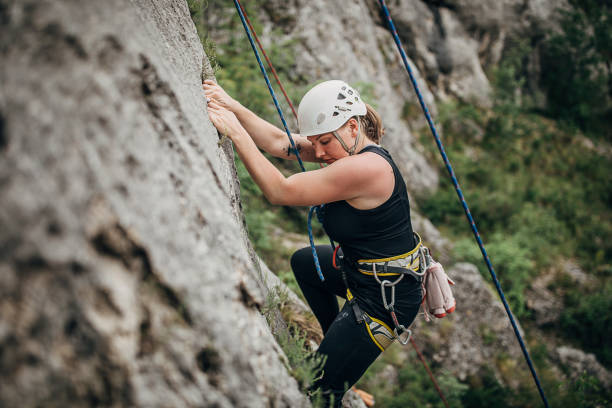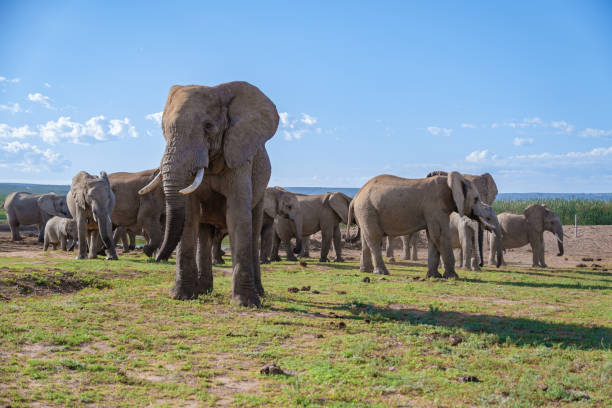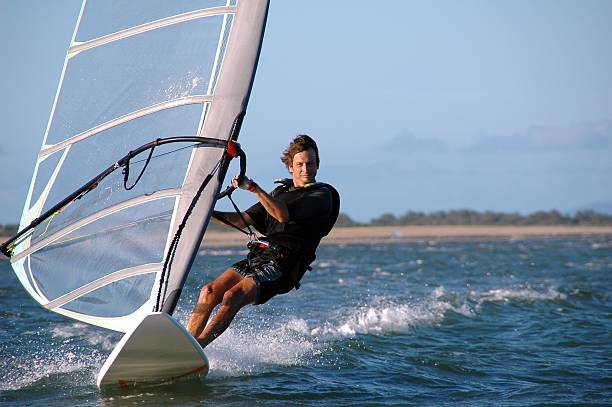Grip strength is one of the most important physical attributes for rock climbers. Whether you are scaling a boulder problem or ascending a multi-pitch route, your grip is essential to maintain control, prevent slippage, and reduce the risk of injury. Stronger grip strength can help you climb more efficiently, endure longer on challenging routes, and avoid unnecessary fatigue.
Why Grip Strength Matters in Rock Climbing
Grip strength is critical in rock climbing because it directly affects your ability to hold onto various types of holds—whether it’s small crimps, slopers, or pinches. Climbing demands a strong and versatile grip that can hold your body weight while you maneuver across challenging rock faces.
Without sufficient grip strength, your hands will tire quickly, limiting your performance and possibly causing you to lose your grip mid-climb.
In addition to being important for holding onto holds, grip strength also helps with other aspects of climbing, such as:
- Endurance: Stronger grips allow you to climb longer without your hands becoming fatigued.
- Control: A solid grip provides better control of your body movements, especially when using one hand for balance or positioning.
- Injury Prevention: Climbing with weak grip strength can lead to overgripping and poor form, which increases the risk of tendon injuries in your hands and forearms.
Key Muscles Involved in Grip Strength for Climbing
Before diving into the exercises, it’s important to understand which muscles are involved in grip strength. Rock climbing primarily uses the muscles in your hands, fingers, wrists, and forearms. These muscles need to work together efficiently for a strong, sustainable grip.
Key muscles include:
- Flexor Muscles: These are located in your forearms and are responsible for the bending action of your fingers. They play a vital role in generating the force needed to grip holds.
- Extensor Muscles: Located on the opposite side of your forearms, these muscles help extend your fingers. They balance the flexors, ensuring that you can release your grip without injury.
- Intrinsic Hand Muscles: These muscles are located within your hands and fingers. They control fine motor movements, such as holding onto small crimps or slopers.
- Wrist Flexors and Extensors: These muscles help stabilize your wrist and forearm, allowing for better control when gripping larger holds or adjusting your position.
Effective Exercises to Build Grip Strength for Climbing
There are several specific exercises and drills you can incorporate into your training routine to improve grip strength for rock climbing. These exercises focus on both general grip strength and climbing-specific grip techniques.
1. Fingerboard Training
Fingerboards, also known as hangboards, are one of the most popular tools for climbers to improve their grip strength. They allow climbers to train their fingers, hands, and forearms by simulating the holds used on actual rock walls.
- How to do it: Start by hanging from a fingerboard using different grip positions (crimps, slopers, pinches). Gradually increase the duration you hang and the intensity by using smaller holds or adding weight to make it more challenging.
- Progression: Begin with longer rest periods and slowly decrease the rest time as your grip strength improves. Focus on proper form to avoid injury and strain.
2. Dead Hangs
Dead hangs are a simple but effective exercise for building finger strength and endurance. They also help build the muscular endurance needed to hold onto grips during longer climbs.
- How to do it: Find a pull-up bar or use a fingerboard. Hang from the bar using your fingers and thumbs, making sure your body is fully engaged. Start with a 10-15 second hang and gradually increase the time as you get stronger.
- Variation: Use different types of holds, such as wide grips or narrow grips, to target various muscles and improve versatility.
3. Pinch Grips
Pinch grips simulate the act of gripping holds like pinches or wide slopers, which require a unique kind of strength. Pinch grip exercises help to improve your thumb and index finger strength, which is essential for these types of holds.
- How to do it: Hold a weight plate or a pinch grip trainer with both hands, using only your thumb and fingers to maintain a secure grip. Start with a weight that you can hold for 20-30 seconds and gradually increase the weight as you build strength.
- Progression: Work on holding the grip for longer durations or increasing the weight as your pinch grip strength improves.
4. Wrist Curls and Reverse Wrist Curls
Wrist curls target the forearm muscles, particularly the flexors and extensors, which are essential for building a strong grip. These exercises also enhance wrist stability, which is vital for controlling your grip during dynamic movements.
- How to do it: Sit with your forearms resting on your thighs, holding a dumbbell in each hand. Perform wrist curls by curling your wrists upwards, then reverse wrist curls by extending your wrists downward. Perform both exercises slowly for controlled movement.
- Progression: Gradually increase the weight or number of repetitions to continue building wrist and forearm strength.
5. Farmer’s Walk
The farmer’s walk is a full-body exercise that improves your grip strength while also working your core and legs. It’s especially beneficial for climbers because it builds endurance in the forearms and helps with maintaining grip strength during longer climbs.
- How to do it: Hold a heavy dumbbell or kettlebell in each hand. Stand up straight and walk for a set distance or time while keeping your arms fully extended at your sides. Maintain a firm grip on the weights as you walk.
- Variation: Increase the weight or distance over time to continually challenge your grip strength.
Climbing-Specific Techniques for Improving Grip
In addition to traditional strength-building exercises, climbing-specific techniques can help you enhance your grip strength in a more functional way. These techniques focus on improving your body’s ability to engage and relax muscles while climbing.
1. Practice Climbing with Less Grip
It might seem counterintuitive, but one of the best ways to build grip strength is by practicing climbing with minimal grip pressure. Focus on using your whole body to climb, and try to keep your hands relaxed while still maintaining control of the holds.
- How to do it: When climbing, consciously reduce the force you use with your hands. Rely more on your legs, and only engage your fingers when necessary. This helps prevent over-gripping and strengthens your hand muscles without tiring them too quickly.
2. Use Sloper Holds
Slopers (rounded holds that don’t offer much positive grip) are often challenging for climbers because they require you to engage your whole hand. Training with slopers builds overall hand strength and helps climbers develop a more balanced grip.
- How to do it: Include sloper holds in your training sessions, making sure to focus on maintaining a solid, stable grip without relying on your thumb. These holds are excellent for improving finger and wrist engagement.
Nutrition and Recovery Tips for Stronger Hands and Forearms
Grip strength doesn’t only come from training—it also comes from how well you care for your body. Nutrition and recovery play a big role in building and maintaining grip strength.
- Protein: Ensure you are consuming enough protein to support muscle recovery and growth. This is essential for the repair and development of the muscles in your forearms and hands.
- Stretching: After your climbing sessions, stretch your fingers, wrists, and forearms to prevent tightness and muscle imbalances.
- Rest: Rest is crucial for preventing overtraining and injuries. Give your hands and forearms adequate time to recover between intense training sessions.
Common Mistakes and How to Avoid Them
Improving grip strength is a gradual process, and it’s important to avoid common mistakes that can hinder your progress or lead to injury. Some things to keep in mind include:
- Overtraining: Overtraining your grip muscles can lead to tendonitis or other injuries. Ensure you incorporate rest days into your training schedule.
- Poor Form: Using improper form when training (such as rounding your wrists or overgripping) can lead to strain and long-term injuries. Always focus on controlled movements and use proper form.
- Neglecting Other Muscle Groups: While grip strength is essential, don’t neglect other muscle groups. A balanced workout routine that targets your whole body will improve your climbing performance overall.


